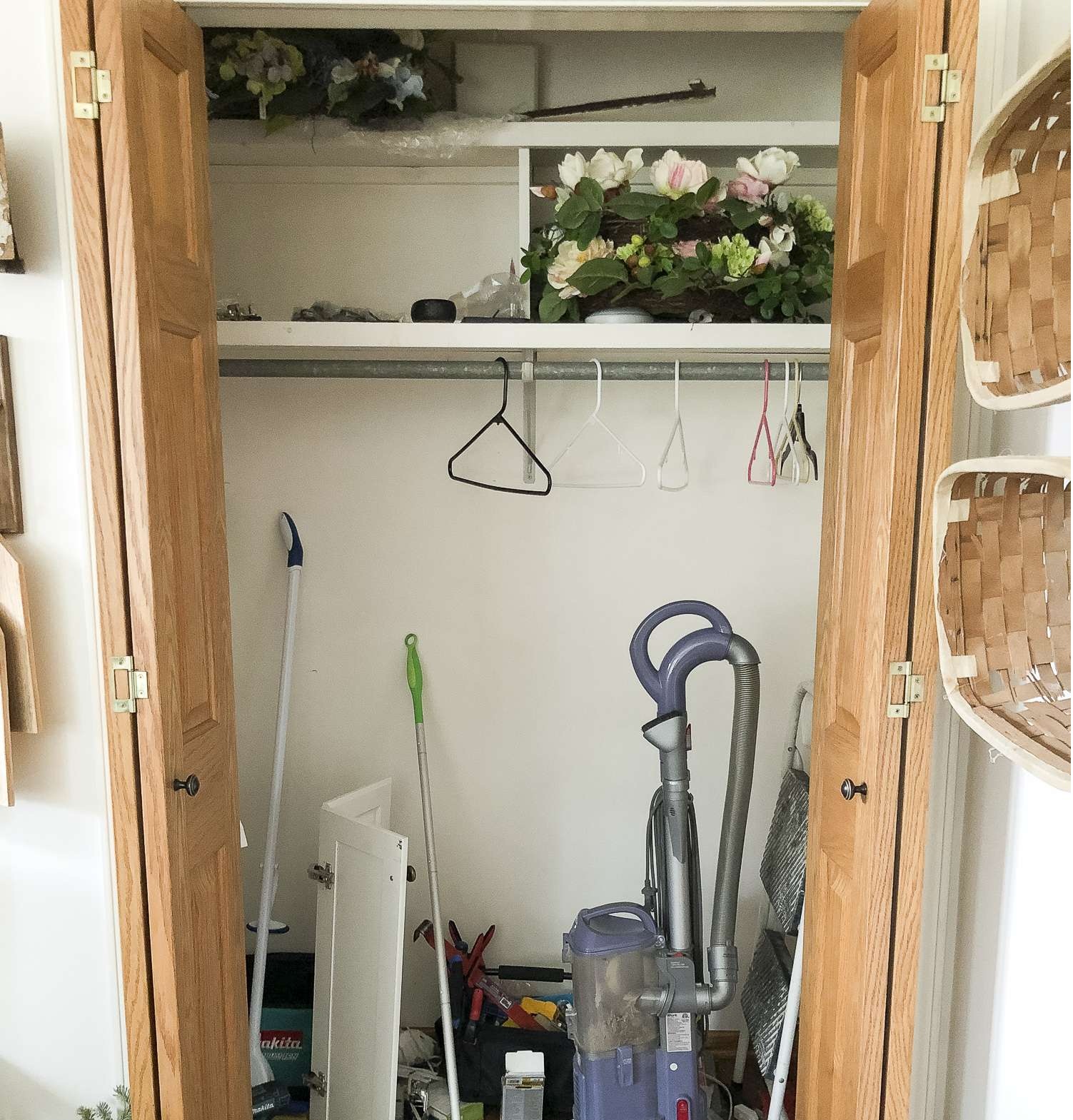

Articles
What Is Utility Closet
Modified: October 20, 2024
Discover the importance of a utility closet for kitchen storage. Maximize space and organization with our expert tips and creative ideas.
(Many of the links in this article redirect to a specific reviewed product. Your purchase of these products through affiliate links helps to generate commission for Storables.com, at no extra cost. Learn more)
Definition of a Utility Closet
A utility closet, also known as a mechanical room or service closet, is a dedicated space within a building that houses essential utility equipment and supplies. It serves as a centralized hub for various systems and utilities, such as electrical panels, water heaters, HVAC units, telecommunications infrastructure, and storage for cleaning supplies.
Unlike other areas of a building that may be visible and aesthetically pleasing, utility closets are typically tucked away and accessed by authorized personnel only. They are designed to provide easy access for maintenance and repairs while keeping equipment out of sight from the general public.
The primary purpose of a utility closet is to ensure that all necessary utilities and systems are organized, protected, and easily accessible. It plays a crucial role in maintaining the functionality and efficiency of a building by containing the vital components needed for its operation.
Utility closets can be found in various types of buildings, including residential homes, commercial offices, educational institutions, healthcare facilities, and more. The size and layout of a utility closet can vary based on the building’s needs and available space, but the common goal remains the same: to provide a functional and organized storage area for utility equipment.
In addition to housing utility equipment, utility closets may also provide storage space for other items that are necessary for building maintenance and operations. This can include cleaning supplies, spare parts, tools, and safety equipment.
In summary, a utility closet is a dedicated space within a building that houses essential utility equipment and supplies. It plays a vital role in ensuring the functionality and efficiency of a building by providing a centralized and organized storage area for various systems and utilities.
Key Takeaways:
- A well-organized utility closet enhances efficiency, safety, and equipment maintenance, ultimately saving time and costs while contributing to the overall aesthetics and professionalism of a building.
- By implementing innovative storage solutions and regular maintenance, a well-organized utility closet maximizes space, improves accessibility, and creates a functional, efficient workspace.
Read more: How To Organize A Utility Closet
Purpose of a Utility Closet
A utility closet serves several important purposes in a building. Its main function is to provide a designated space for housing and organizing utility equipment and supplies. Let’s explore the key purposes of a utility closet:
1. Centralized Storage: One of the primary purposes of a utility closet is to provide a centralized location for storing utility equipment and supplies. By having a designated space, it becomes easier to keep everything organized and readily accessible when needed.
2. Equipment Protection: Utility equipment, such as electrical panels and HVAC units, can be sensitive and expensive. A utility closet safeguards these essential components from damage, vandalism, or tampering by unauthorized individuals. The confined and controlled environment of the utility closet helps prevent accidents, ensuring the proper functioning of the equipment.
3. Easy Maintenance and Repairs: Another purpose of a utility closet is to facilitate routine maintenance and repairs. Having all utilities in one place simplifies the process of accessing and servicing the equipment. Maintenance technicians can easily reach the necessary components, making inspections, repairs, and replacements more efficient and cost-effective.
4. Safety and Compliance: Utility closets are designed to meet safety regulations and building codes. They provide a secure location to house potentially hazardous equipment, such as electrical panels or gas meters. By adhering to safety standards, utility closets help mitigate risks and ensure the well-being of occupants and the building itself.
5. Space Optimization: Utility closets help maximize the available space within a building. By consolidating utility equipment in a dedicated area, it frees up other areas for more functional use. This is particularly beneficial in smaller buildings or spaces where every square foot counts.
6. Noise Reduction: Many utility systems, such as HVAC units or water heaters, can generate noise during operation. By confining these noisy components within a utility closet, it helps contain and minimize the sound, creating a more comfortable environment for building occupants.
7. Aesthetics: While utility closets are typically not visible to the general public, they still play a role in maintaining the overall aesthetics of a building. By keeping utility equipment hidden away in a neatly organized closet, it contributes to a more visually appealing and clutter-free environment.
In summary, the key purposes of a utility closet are centralized storage, equipment protection, easy maintenance and repairs, safety and compliance, space optimization, noise reduction, and maintaining aesthetics. By fulfilling these purposes, utility closets contribute to the efficient functioning and longevity of a building’s utility systems.
Common Features of Utility Closets
Utility closets play a vital role in housing and organizing essential utility equipment and supplies. While the specific features of utility closets may vary depending on the building’s needs and available space, there are several common features that can be found in most utility closets. Here are some of the typical features:
1. Shelving and Storage Units: A crucial feature of utility closets is the presence of shelves and storage units. These provide a designated space for organizing and storing various items such as cleaning supplies, spare parts, tools, and other utility-related equipment.
2. Electrical Panel: Utility closets often house the electrical panel, which is responsible for distributing electricity throughout the building. The electrical panel contains circuit breakers, switches, and other components necessary for safely and efficiently managing the electricity supply.
3. HVAC Systems: Heating, ventilation, and air conditioning (HVAC) components are commonly found in utility closets, especially in larger buildings. These systems include air handlers, furnaces, condensers, and pumps that regulate the temperature and air quality within the building.
4. Water Heater: Utility closets in residential and commercial buildings typically contain water heaters. These devices heat and store hot water for various purposes, including bathing, cleaning, and cooking.
5. Telecommunications Infrastructure: In today’s connected world, utility closets often house telecommunications infrastructure, such as network switches, routers, and wiring. This allows for the distribution of internet and telephone services throughout the building.
6. Ventilation and Exhaust Systems: Given the presence of various utility equipment, utility closets often feature ventilation and exhaust systems. These help remove heat, odors, and potentially hazardous gases, ensuring a safe and comfortable environment within the closet.
7. Lighting: Adequate lighting is an essential feature of utility closets. It allows maintenance personnel to navigate and work safely within the closet, ensuring that they can easily access and inspect the equipment and supplies stored.
8. Security Measures: Utility closets may incorporate security measures to ensure only authorized personnel can access the area. This can include lockable doors, security cameras, or access control systems, protecting the valuable equipment from theft or vandalism.
9. Labels and Signage: Clear labels and signage are important features of a well-organized utility closet. They help identify equipment, supplies, and safety information, making it easier for maintenance personnel to locate what they need quickly and safely.
In summary, utility closets commonly feature shelving and storage units, electrical panels, HVAC systems, water heaters, telecommunications infrastructure, ventilation and exhaust systems, lighting, security measures, and labels/signage. These features work together to create a functional and organized space for housing and managing necessary utility equipment and supplies.
Organization and Storage in a Utility Closet
A well-organized utility closet is crucial for efficient access to utility equipment and supplies. Proper organization and storage can save time, prevent accidents, and improve overall functionality. Here are some key considerations for organizing and maximizing storage in a utility closet:
1. Categorize and Group: Start by categorizing utility equipment and supplies into groups. For example, group cleaning supplies together, separate electrical components, and organize tools by type. This approach makes it easier to locate items quickly and promotes a more efficient workflow.
2. Utilize Shelving and Storage Units: Install sturdy and adjustable shelves in the utility closet to maximize vertical storage space. This allows for efficient use of the available area and facilitates easy access to different items. Consider using storage bins or containers to maintain a neat and organized appearance.
3. Clear Labeling: Labeling is crucial for clear identification of items in the utility closet. Use durable and easily readable labels for shelves, bins, and containers. This makes it simple to locate specific items at a glance, reducing the need for time-consuming searches.
4. Accessibility: Arrange frequently used items at eye level or within easy reach. Reserve the lower shelves for heavier items or supplies that are less frequently accessed. Keep a step stool or ladder nearby for reaching higher shelves or items stored at the top of the closet.
5. Lighting: Ensure the utility closet is well-lit to enhance visibility and safety. Adequate lighting allows for easy identification of equipment and reduces the risk of accidents while maneuvering in the closet.
6. Secure Equipment: Use hooks or brackets to secure equipment such as brooms, mops, and hoses. This prevents them from falling or causing hazards. Additionally, consider installing clips or magnetic strips to hold small tools or accessories in place.
7. Safety Precautions: Keep safety in mind when organizing the utility closet. Place hazardous substances or flammable materials in designated areas or locked cabinets to protect individuals and comply with safety regulations.
8. Rotation and Inventory: Regularly assess the contents of the utility closet and rotate supplies to ensure optimal use. Conduct inventory checks to prevent stock shortages or expired items. Remove any damaged or obsolete equipment to create additional space.
9. Maintenance Schedule: Develop a maintenance schedule to clean and organize the utility closet on a regular basis. This ensures the longevity of equipment and prevents the accumulation of dust or debris that could potentially impact performance.
10. Document Organization: Keep an inventory list or document indicating the location of specific equipment and supplies within the utility closet. This reference tool aids in locating items quickly, especially during emergencies or when delegating tasks to others.
By implementing these organization and storage practices, utility closets can be transformed into efficient, well-structured spaces. A properly organized utility closet promotes safety, streamlines operations, and ensures that essential equipment and supplies are readily accessible when needed.
Importance of Regular Maintenance for Utility Closets
Regular maintenance is crucial for keeping utility closets in optimal condition and ensuring the smooth operation of utility equipment. Neglecting maintenance can lead to equipment failures, safety hazards, and inefficiencies. Here are the key reasons why regular maintenance is important for utility closets:
1. Equipment Performance: Regular maintenance helps maintain the performance and efficiency of utility equipment. By conducting routine inspections, cleaning, and servicing, potential issues can be identified and addressed before they escalate into major problems. This proactive approach ensures that equipment functions optimally and minimizes downtime.
2. Safety and Compliance: Utility closets may house potentially hazardous equipment, such as electrical panels or gas-powered devices. Regular maintenance helps ensure that safety measures are up to date, reducing the risk of accidents or malfunctions. Compliance with safety regulations and building codes also helps protect occupants and property from potential hazards.
3. Energy Efficiency: Well-maintained utility equipment operates more efficiently, leading to energy savings. Regular maintenance includes cleaning or replacing filters, checking for leaks or inefficiencies, and optimizing settings. This results in lower utility bills while reducing the building’s environmental impact.
4. Extending Equipment Lifespan: Routine maintenance helps prolong the lifespan of utility equipment. By performing regular inspections, lubrication, and repairs as needed, potential issues can be addressed early on. This prevents further damage or excessive wear and tear, ultimately extending the equipment’s lifespan, reducing the need for premature replacements.
5. Preventative Maintenance: Regular maintenance allows for the identification and prevention of potential problems. By conducting inspections and adhering to a maintenance schedule, issues can be detected in their early stages. This enables proactive measures, such as replacing worn-out parts or addressing minor malfunctions before they escalate, minimizing downtime and costly emergency repairs.
6. Optimal Performance of Systems: Utility closets house interconnected systems, such as HVAC, electrical, and telecommunications. Regular maintenance ensures that these systems operate harmoniously, allowing for seamless communication and function. This contributes to a comfortable and efficient building environment.
7. Cost Savings: The cost of regular maintenance is often outweighed by the potential savings in repairs and replacements. By addressing issues early, maintenance can help identify and rectify minor problems before they become expensive emergencies. Additionally, well-maintained equipment operates more efficiently, resulting in lower utility costs over time.
8. Compliance with Warranty Requirements: Many utility equipment warranties require regular maintenance as a condition of coverage. Failing to perform the recommended maintenance can void warranties, leaving the building owner responsible for repairs or replacements.
In summary, regular maintenance is crucial for utility closets. It ensures optimal performance of equipment, promotes safety and compliance, reduces energy consumption, extends equipment lifespan, prevents costly breakdowns, enables efficient system operation, and helps comply with warranty requirements. By investing in regular maintenance, building owners can optimize the functionality, efficiency, and longevity of their utility closets and the equipment they house.
Read more: What Is A Utility Sink
Ideas for Maximizing Space in a Utility Closet
Maximizing space in a utility closet is essential to ensure efficient storage and organization of equipment and supplies. By utilizing smart organizational strategies and innovative solutions, you can create more space and optimize the functionality of your utility closet. Here are some ideas to help you make the most of the available space:
1. Utilize Vertical Space: Take advantage of the vertical space in your utility closet by installing adjustable shelves or using stackable storage bins. This allows you to make use of the available height and prevent wasted space. Keep frequently used items at eye level for easy access.
2. Door Storage: The inside of the utility closet door can be an often-overlooked storage opportunity. Install hooks, racks, or adhesive storage solutions to hang frequently used items such as brooms, dustpans, or small tools. Consider using over-the-door organizers to store smaller supplies like gloves, keys, or utility belts.
3. Declutter and Purge: Regularly review the contents of your utility closet and remove any items that are no longer necessary or functional. Dispose of expired products, unused equipment, or duplicate items. This will free up valuable space and prevent clutter from accumulating over time.
4. Use Clear Containers and Labels: Transparent storage containers allow you to easily see the contents without having to open each one. Label the containers to identify what is inside, promoting easy access and efficient organization. Consider using color-coded labels for different categories or types of items.
5. Compact and Modular Storage Solutions: Explore compact and modular storage systems specifically designed for utility closets. These may include customizable shelving units, pull-out drawers, or wall-mounted organizers. These innovative solutions help maximize space and provide efficient storage options for various items.
6. Pegboards or Gridwall Systems: Install pegboards or gridwall systems on the walls of your utility closet. This allows you to hang tools or smaller equipment, keeping them accessible and saving shelf space. Use hooks or baskets to store items with different shapes and sizes.
7. Rolling Carts or Mobile Shelving: Consider using rolling carts or mobile shelving units that can be easily moved in and out of the utility closet. This gives you flexibility when accessing and organizing items. Use the cart or shelving to store frequently used supplies, making them more accessible.
8. Vacuum-Sealed Bags: For items such as spare parts, linens, or seasonal equipment, use vacuum-sealed bags to compress and maximize storage space. These bags remove excess air and can be stacked or placed in underutilized areas of the closet.
9. Utilize Wall Space: Install wall-mounted hooks, hangers, or racks to hang items such as hoses, cords, or safety vests. This helps keep the floor and shelves clear, creating more space for other essential items.
10. Multi-functional Storage Solutions: Look for storage solutions that have multiple functions. For example, install a fold-down ironing board on the inside of the utility closet door, or use a wall-mounted rack that doubles as a broom holder and a cleaning supply organizer.
In summary, maximizing space in a utility closet involves utilizing vertical space, door storage, decluttering, using clear containers and labels, exploring compact and modular storage solutions, incorporating pegboards or gridwall systems, utilizing rolling carts or mobile shelving, using vacuum-sealed bags, utilizing wall space, and considering multi-functional storage solutions. By implementing these ideas, you can create a well-organized and efficient utility closet that optimizes space and enhances functionality.
A utility closet is a small room or space in a building used to house equipment such as electrical panels, water heaters, and HVAC systems. It is important to keep this area organized and accessible for maintenance and emergency purposes.
Tips for Organizing Different Items in a Utility Closet
Organizing different items in a utility closet can be a challenging task, considering the variety of equipment and supplies that need to be stored. Here are some practical tips to help you efficiently organize different items in your utility closet:
1. Cleaning Supplies:
- Group similar cleaning supplies together, such as all-purpose cleaners, disinfectants, and glass cleaners.
- Use caddies or bins to store smaller cleaning items like sponges, brushes, and gloves.
- Consider installing a wall-mounted broom and mop holder to keep these items organized and upright.
- Label shelves or containers to clearly identify different cleaning products and tools.
2. Tools:
- Hang frequently used tools on hooks or pegboards for easy access and to save shelf space.
- Use tool organizers or trays to keep smaller tools and accessories organized and prevent them from getting lost or damaged.
- Keep a toolbox or tool bag in the utility closet to store less frequently used or larger tools.
- Label or mark tools and their designated storage locations to ensure they are returned to their proper places.
3. Electrical Equipment:
- Organize electrical equipment such as cables, extension cords, and power strips in separate containers or use cable reels to prevent tangling.
- Label cables and cords to easily identify their purpose and avoid confusion.
- Consider using cable clips or ties to keep cables neatly organized and prevent them from becoming tripping hazards.
- Store spare batteries and other electrical components in labeled containers to avoid loss or confusion.
4. Spare Parts:
- Keep spare parts or replacement items stored in clear and labeled containers for easy identification.
- Group spare parts by type or equipment, and consider utilizing small plastic bins or drawer organizers to keep them organized.
- Create an inventory list of spare parts, noting their location in the utility closet, to quickly locate and restock when needed.
- Regularly review and update the inventory to ensure accurate stock levels and prevent obsolete parts from taking up unnecessary space.
5. Safety Equipment:
- Designate a specific area or cabinet for safety equipment such as fire extinguishers, first aid kits, and safety vests.
- Make sure safety equipment is easily visible and accessible in case of emergencies.
- Install hooks or holders to hang safety equipment such as hard hats, safety goggles, or high-visibility vests.
- Regularly check expiration dates on items like fire extinguishers or first aid supplies, and replace them as needed.
6. Hardware and Small Parts:
- Use small bins or compartmentalized storage boxes to organize and store hardware items like screws, nails, bolts, and washers.
- Label the bins or boxes according to the type and size of the hardware enclosed.
- Consider using magnetic strips or trays to keep small metal items together, such as drill bits or screwdrivers.
- Stackable storage containers with transparent lids can be used for larger hardware items or tools.
By following these tips, you can create a well-organized utility closet, ensuring that different items are easily accessible, properly stored, and labeled. This efficient organization system saves time, maximizes space, and promotes a safe and functional working environment.
Key Considerations When Designing a Utility Closet
Designing a utility closet involves careful planning to ensure it meets the specific needs of the building and the equipment it will house. Here are some key considerations to keep in mind when designing a utility closet:
1. Location:
- Choose a location for the utility closet that is easily accessible but not in a high-traffic area to minimize disturbances or potential damage.
- Consider proximity to utility connections such as electrical panels, water supply, or HVAC systems for practicality and convenience.
2. Size and Layout:
- Analyze the equipment and supplies that will be stored in the utility closet to determine its size requirements.
- Consider the possibility of future needs and allow for additional space if expansion or new equipment installation is anticipated.
- Ensure that the layout allows for efficient movement, access to equipment, and maintenance activities.
3. Ventilation and Temperature Control:
- Ensure proper ventilation in the utility closet to prevent the buildup of heat or humidity, especially for equipment like water heaters or HVAC units.
- Consider installing fans or ventilation systems to improve airflow and regulate temperature.
- Consult with HVAC professionals to ensure that temperature control measures align with the requirements of specific equipment.
4. Lighting:
- Incorporate sufficient lighting in the utility closet to enable clear visibility of equipment, labels, and storage areas.
- Consider using energy-efficient lighting solutions, such as LED lights, to reduce energy consumption.
- Ensure that light fixtures are adequately protected and comply with safety regulations.
5. Storage and Organization:
- Plan appropriate storage solutions, such as shelves, cabinets, hooks, or racks, to accommodate the specific equipment and supplies to be stored.
- Allocate designated areas or compartments for different categories of items, such as cleaning supplies, tools, spare parts, or safety equipment.
- Consider incorporating storage solutions that maximize space utilization, such as adjustable shelves or stackable storage bins.
6. Safety Measures:
- Adhere to safety codes and regulations when designing the utility closet to ensure the safety of individuals accessing the area and the surrounding environment.
- Consider using fire-resistant materials for walls, installing fire suppression systems, and providing clear evacuation paths.
- Install safety equipment like fire extinguishers and emergency lighting, ensuring they are easily accessible and clearly marked.
7. Accessibility and Maintenance:
- Ensure that the design allows for easy access to equipment and storage areas by providing sufficient space and clear pathways.
- Incorporate features that simplify maintenance activities, such as removable panels, equipment labeling, and safe access to electrical panels.
- Consider installing utility shut-off valves or controls in easily accessible locations for emergency situations.
8. Aesthetics:
- Although utility closets are not typically visible to the public, consider incorporating aesthetic elements to improve the overall appearance and organization of the space.
- Choose materials and finishes that are durable, easy to clean, and resistant to moisture and corrosion.
- Ensure that the utility closet blends harmoniously with the overall design and aesthetics of the building if it is visible to occupants or personnel.
By considering these key factors when designing a utility closet, you can create a well-planned and functional space that efficiently meets the needs of the building’s utility systems and supports easy equipment maintenance and storage.
Common Mistakes to Avoid When Organizing a Utility Closet
When organizing a utility closet, it’s important to avoid common mistakes that can lead to inefficiency, safety hazards, and difficulty accessing essential equipment and supplies. Here are some common mistakes to avoid when organizing a utility closet:
1. Lack of Planning:
One common mistake is diving into organizing without proper planning. Skipping the planning phase can lead to inefficient use of space, inadequate storage solutions, and difficulties in accessing items when needed. Take the time to evaluate the specific needs of the utility closet and develop a plan before starting the organizing process.
2. Clutter Accumulation:
Allowing clutter to accumulate in the utility closet is a common mistake. Hoarding unnecessary items, failing to declutter regularly, or not disposing of expired or unused supplies can quickly lead to a cluttered and disorganized space. Regularly assess the contents of the utility closet and purge any items that are no longer needed or functional.
3. Poor Categorization:
Failing to properly categorize items in the utility closet is a common mistake that leads to confusion and difficulty finding necessary supplies. Group similar items together and create clear categories for different types of equipment, tools, cleaning supplies, and spare parts. This will make it easier to locate items quickly.
4. Inadequate Labeling:
Lack of labeling is another mistake that hampers organization in a utility closet. Failing to label containers, shelves, or equipment can lead to time-consuming searches and a lack of clarity. Use clear and visible labels to identify the contents of shelves, storage bins, and containers. Proper labeling makes it easier to find specific items and maintain an organized system.
5. Overloading Shelves:
A common mistake is overloading shelves and storage units in the utility closet. Placing too many items on a single shelf can lead to disorganization, difficulty accessing items, and potential safety hazards if the shelf becomes unstable. Properly distribute items across shelves and consider using adjustable shelving to accommodate different-sized equipment and supplies.
6. Inefficient Use of Vertical Space:
Failure to utilize vertical space efficiently is a common mistake when organizing a utility closet. Maximize the available height by installing adjustable shelving, using hooks or pegboards on the walls, or considering the use of stackable storage bins. Wasted vertical space limits storage capacity and makes it harder to keep the closet organized.
7. Neglecting Maintenance:
Neglecting regular maintenance is a mistake that can lead to equipment malfunctions and an overall disorganized space. Schedule regular maintenance tasks, such as cleaning shelves, checking expiration dates of supplies, and ensuring equipment is in proper working order. Regular maintenance helps prevent potential issues and maintains the functionality of the utility closet.
8. Lack of Safety Measures:
Overlooking safety measures is a common mistake that can have serious consequences. Ensure that safety equipment, such as fire extinguishers, first aid kits, or safety goggles, is readily accessible and clearly marked. Follow safety guidelines and regulations when storing potentially hazardous materials or equipment in the utility closet.
By avoiding these common mistakes, you can create a well-organized and functional utility closet that maximizes space, promotes efficiency, and ensures the safety of both personnel and equipment.
Read more: What Is A Walk-in Closet
Innovative Solutions for Utility Closet Organization
When it comes to organizing a utility closet, innovative solutions can help optimize space, improve efficiency, and enhance functionality. Here are some creative and practical ideas for organizing a utility closet:
1. Adjustable and Customizable Shelving:
Consider using adjustable shelving units that can be customized to fit the specific dimensions and needs of your utility closet. This allows for flexible storage options and the ability to adapt the shelf configuration as equipment and supplies change.
2. Magnetic Storage:
Utilize the walls of the utility closet by installing magnetic strips or sheets. This innovative solution allows for storing metal tools or small items such as screwdrivers, wrenches, or small parts. It keeps these items easily accessible, organized, and saves shelf space.
3. Folding Workspace:
If space allows, consider incorporating a folding workspace into your utility closet design. This can be a fold-down tabletop or an extendable shelf that provides a convenient surface for performing tasks or organizing smaller equipment. When not in use, it can be neatly folded away to save space.
4. Pull-Out Drawers:
Install sliding or pull-out drawers within the utility closet for efficient storage of smaller items, tools, or supplies. These drawers maximize space utilization and allow for easy access and organization with minimal effort. Sliding wire baskets or fabric bins can also be utilized for storing items and keeping them neatly arranged.
5. Compact Appliance Integration:
Incorporate space-saving appliances within the utility closet to maximize functionality. For example, consider adding a compact washer and dryer or a built-in ironing board. These integrated features save space, making the utility closet more versatile and multifunctional.
6. Overhead Storage:
Take advantage of the vertical space in the utility closet by installing overhead storage solutions, such as overhead racks or platforms suspended from the ceiling. These provide additional storage for lesser-used or bulkier items, freeing up floor and shelf space for more frequently accessed items.
7. Transparent Storage Containers:
Use transparent storage containers or bins to store and organize smaller items or supplies in the utility closet. The transparency allows for quick identification of contents without the need to open each container. This saves time and allows for easy maintenance and inventory checks.
8. Upcycled Storage Solutions:
Get creative and repurpose household items for innovative storage solutions. For example, use pegboards or hanging shoe organizers to store cleaning supplies, hooks made from bent hangers for hanging cords or tools, or repurposed spice racks for holding smaller bottles or containers.
9. Smart Technology Integration:
Incorporate smart technology into your utility closet organization. Install motion-sensor lighting to automatically illuminate the closet when you enter. Consider using smart labels or inventory management apps to track supplies and automate restocking notifications.
10. Utilize the Back of the Closet Door:
Make use of the back of the utility closet door by installing hooks, racks, or an organization system that can hold frequently used items like brooms, dustpans, or gloves. This creates additional storage space without taking up valuable shelf room.
By incorporating these innovative solutions into your utility closet organization, you can optimize space, improve accessibility, and create a functional and efficient workspace. Find creative ways to tailor these ideas to your specific needs to make the most of your utility closet.
Conclusion: The Significance of a Well-Organized Utility Closet
A well-organized utility closet plays a significant role in maintaining the functionality, efficiency, and safety of a building. By implementing effective organizing strategies and utilizing innovative solutions, the importance of a well-organized utility closet becomes evident. Here are the key takeaways on the significance of a well-organized utility closet:
Efficiency: A well-organized utility closet enhances efficiency by providing easy access to equipment and supplies when needed. With a properly designed layout, labeled storage solutions, and an efficient categorization system, maintenance personnel can quickly locate and retrieve necessary items, minimizing downtime and increasing productivity.
Optimal Use of Space: An organized utility closet maximizes the use of available space. By utilizing vertical storage, incorporating adjustable shelving, and implementing innovative storage solutions, you can save space and improve the overall functionality of the closet. This ensures that essential tools, equipment, and supplies are stored efficiently, allowing for a clutter-free environment.
Safety: A well-organized utility closet promotes safety by reducing the risk of accidents and hazards. Properly labeled shelves and containers help identify dangerous substances or equipment while ensuring that safety gear is readily accessible. Clear pathways and organized storage minimize the potential for tripping or falling incidents, ensuring a safe working environment for maintenance personnel.
Equipment Maintenance: Organization is essential for the effective maintenance of utility equipment. By having a designated space for each item and implementing regular maintenance schedules, equipment can be easily inspected, repaired, and serviced. Regular maintenance helps prolong the lifespan of equipment, prevents unexpected breakdowns, and ensures optimal performance.
Time and Cost Savings: A well-organized utility closet saves time and reduces costs. With an organized system in place, less time is wasted searching for equipment or supplies, leading to increased efficiency. Additionally, a well-maintained utility closet helps prevent equipment failures and the need for costly emergency repairs or replacement, resulting in long-term cost savings.
Aesthetics and Professionalism: An organized utility closet contributes to the overall aesthetics and professionalism of a building. Whether visible to occupants or only accessible to maintenance personnel, a neat and organized utility closet reflects pride in the management of the facility. It creates a positive impression and conveys the commitment to efficiency and professionalism.
In conclusion, a well-organized utility closet is more than just a storage space. It plays a vital role in promoting efficiency, safety, and optimal equipment performance. By implementing thoughtful organizing techniques, innovative solutions, and regular maintenance, you can create a functional, well-structured space that enhances productivity, minimizes risks, and ensures the smooth operation of a building’s utility systems. Invest the time and effort into organizing your utility closet, and the benefits will be significant and long-lasting.
Ready to step up your home organization game? Once your utility closet is in tip-top shape, why not tackle other areas of your house with the same vigor? Finding clever ways to store your items can transform your living space. For those keen on clever, tidy solutions, learning about fabric storage cubes could be a game changer. Perfect for any room, these cubes offer neatness and ease in maintaining an orderly home. They're not just about storage; they're about reclaiming your space and peace of mind.
Frequently Asked Questions about What Is Utility Closet
Was this page helpful?
At Storables.com, we guarantee accurate and reliable information. Our content, validated by Expert Board Contributors, is crafted following stringent Editorial Policies. We're committed to providing you with well-researched, expert-backed insights for all your informational needs.
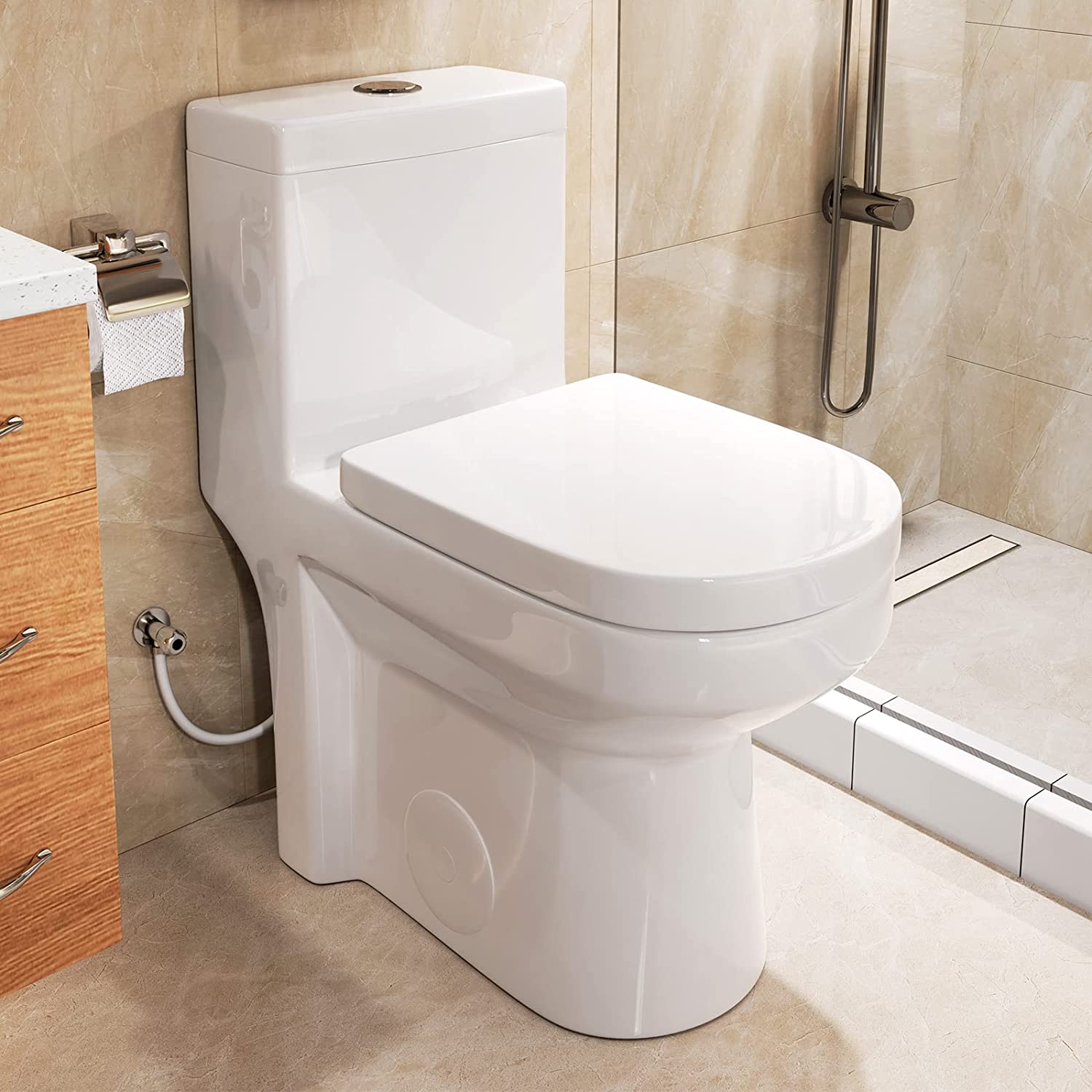

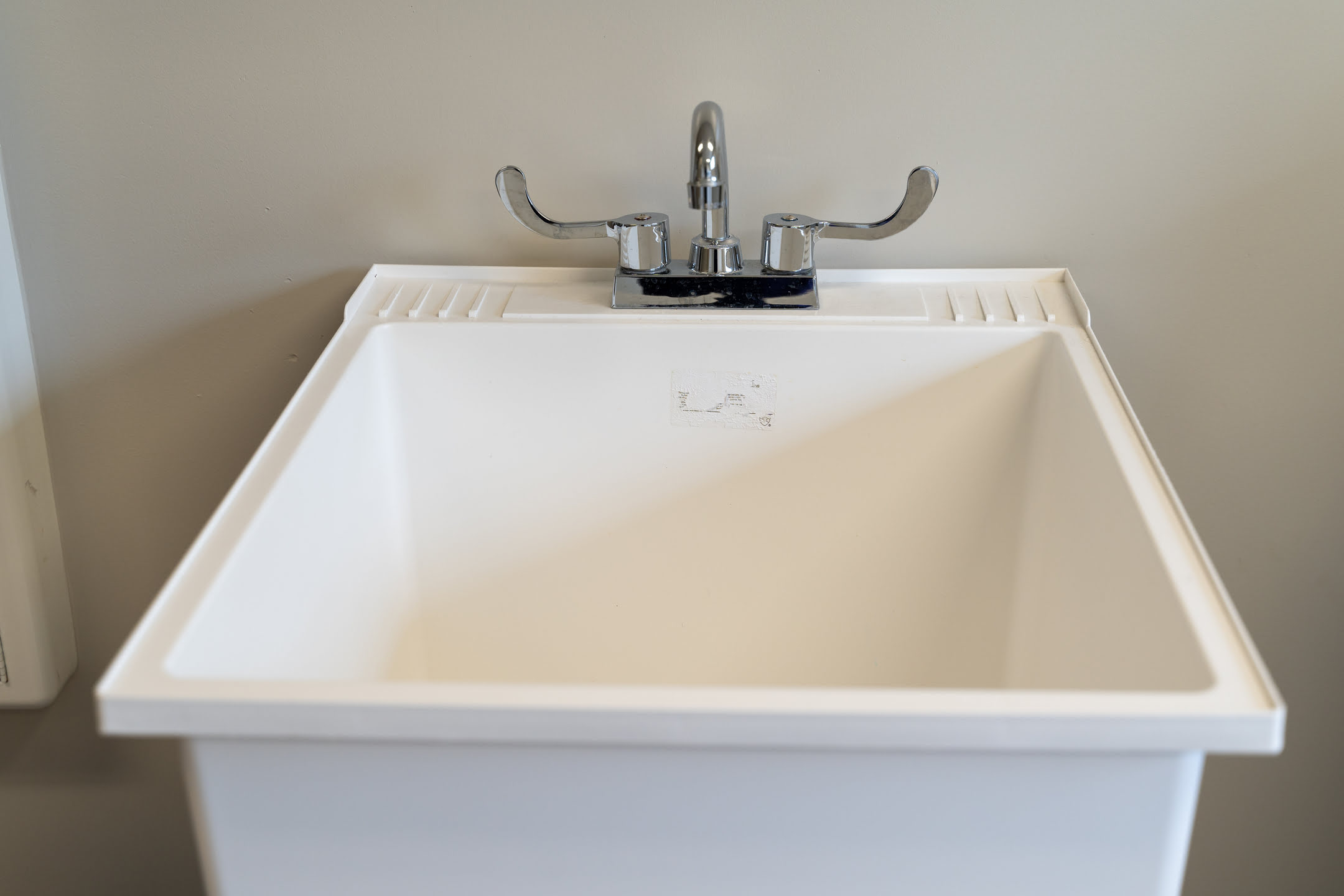

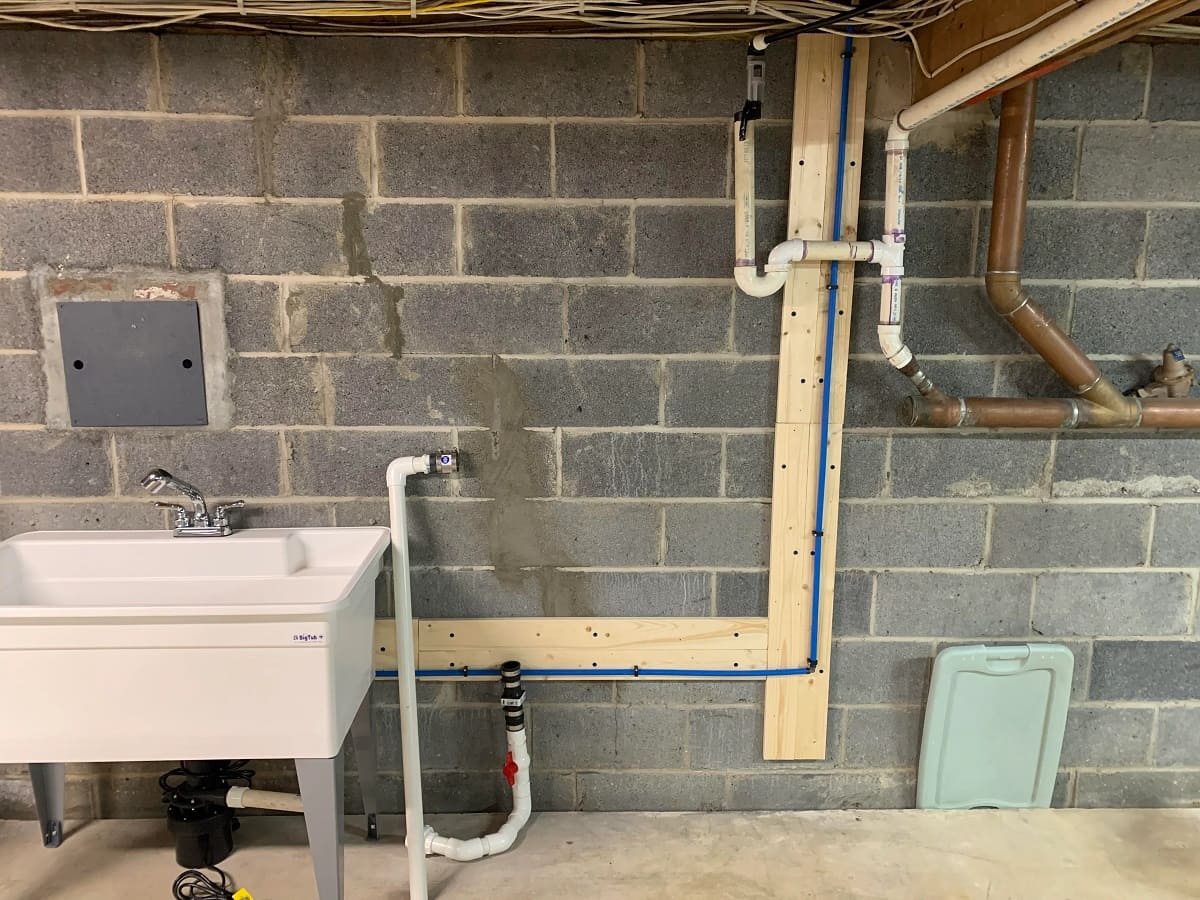
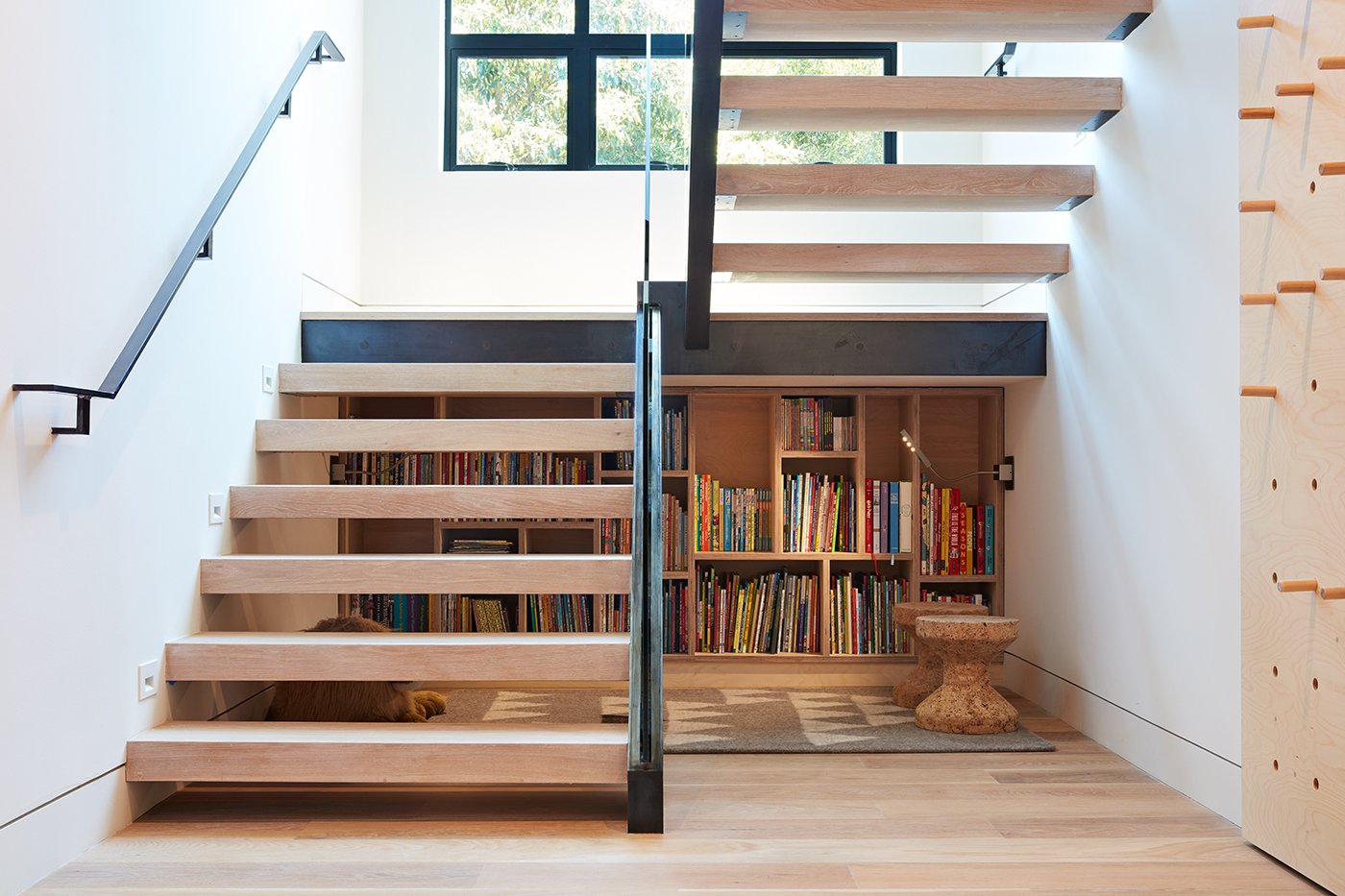

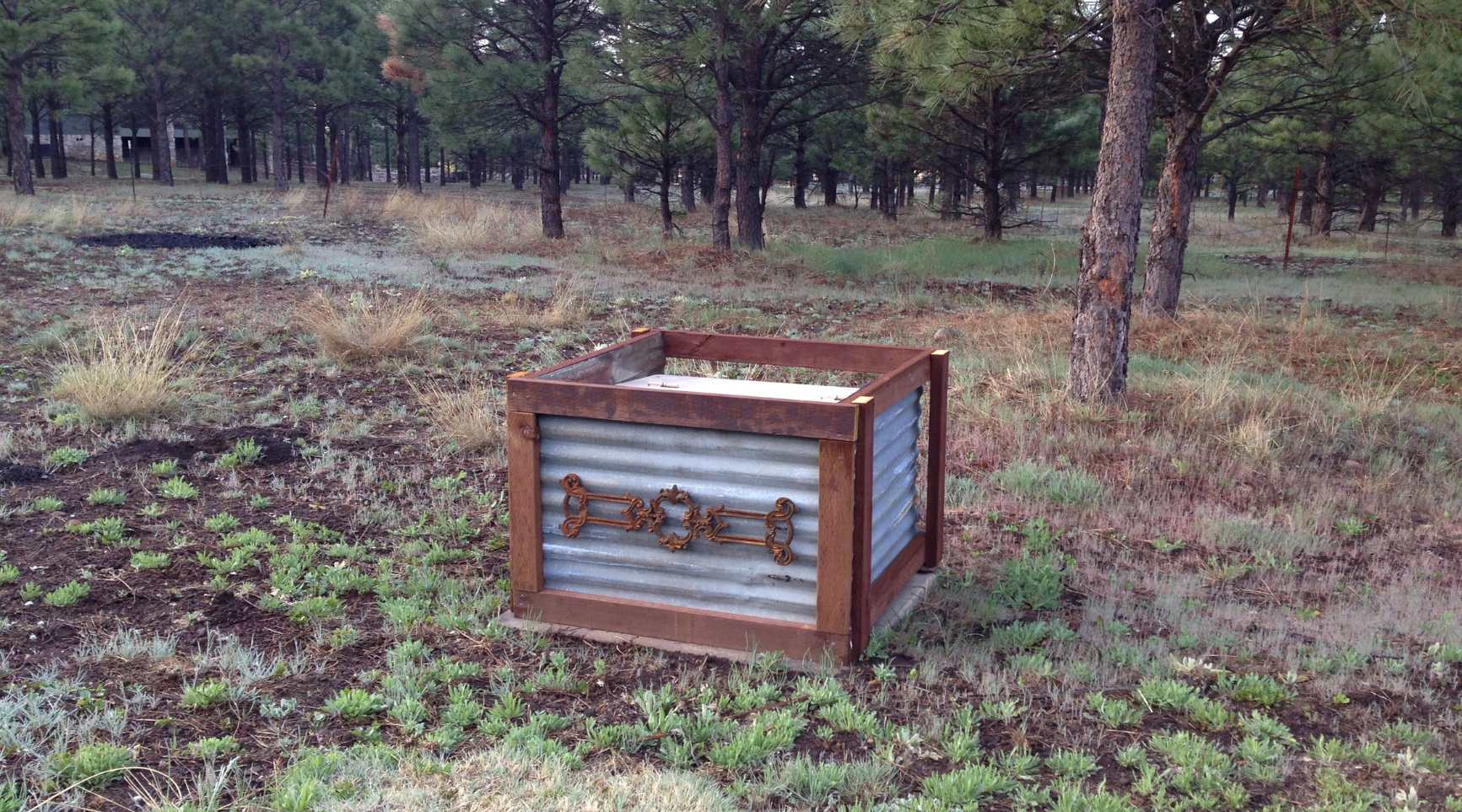
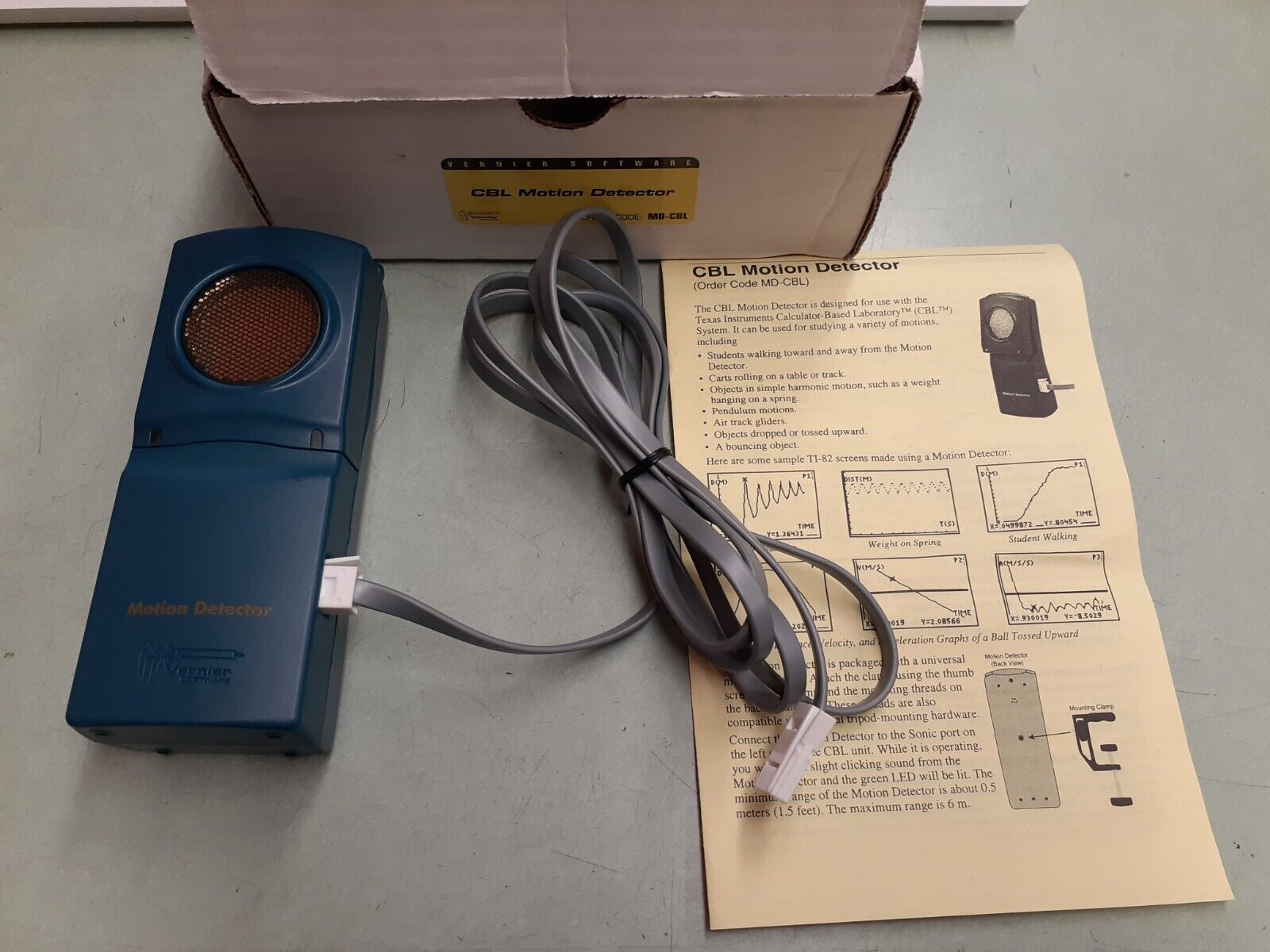

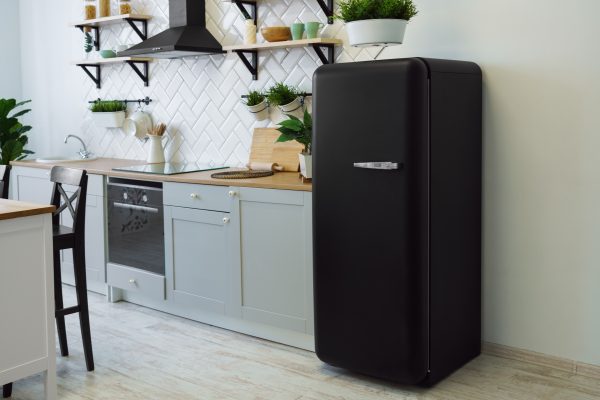
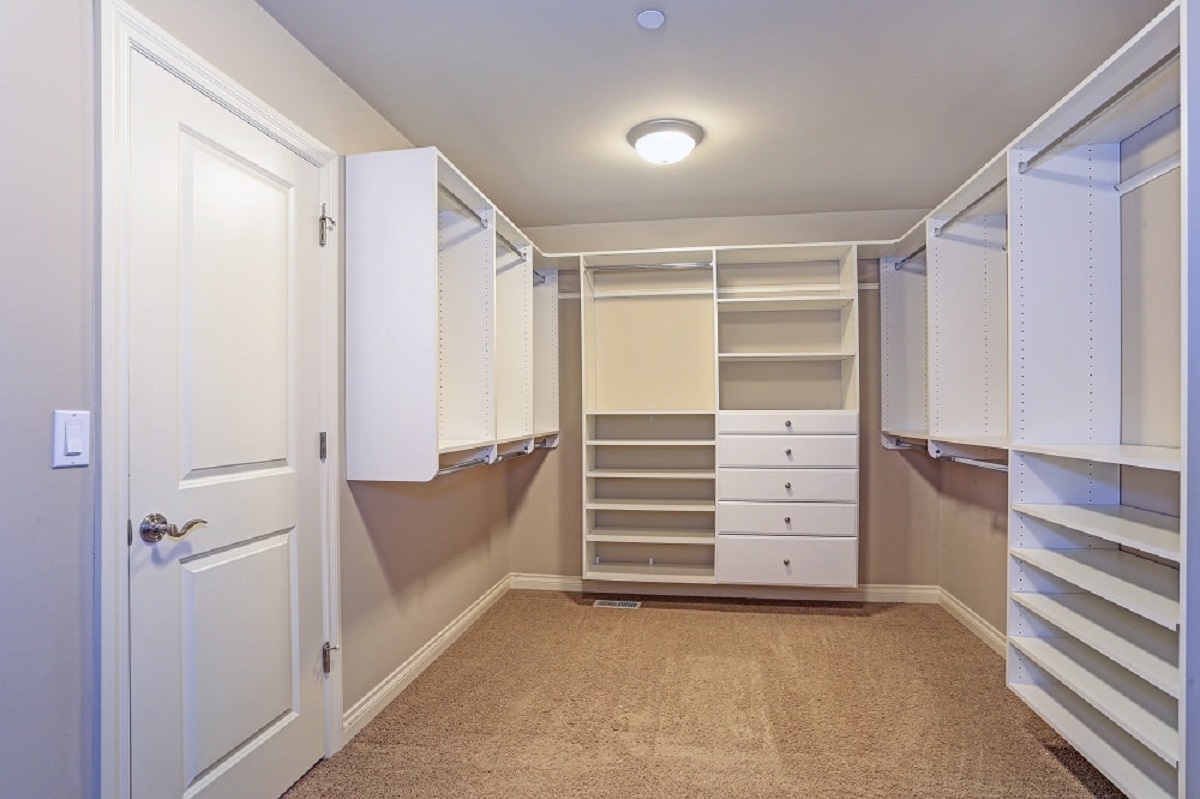
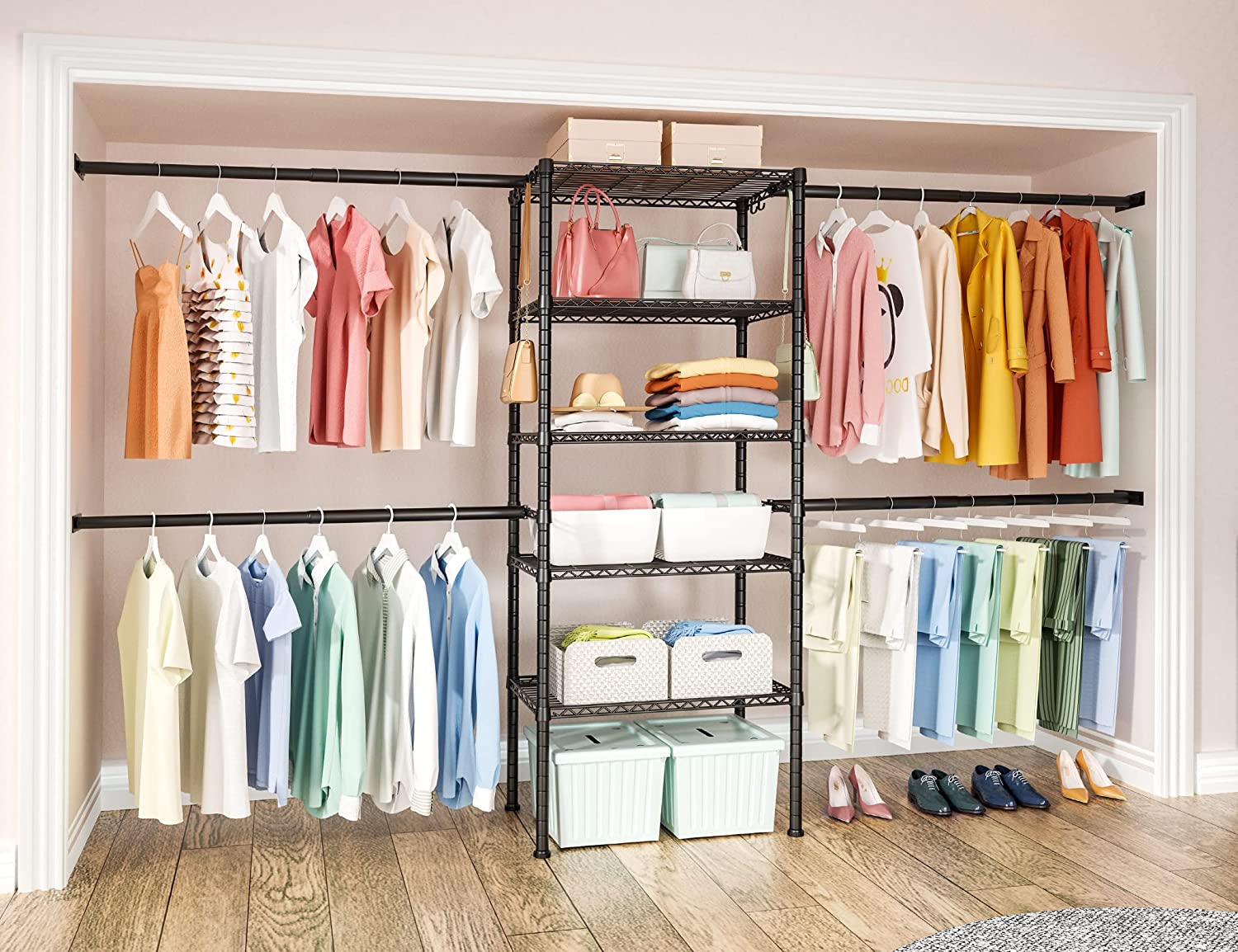

0 thoughts on “What Is Utility Closet”